The Google Nexus 9 Review
by Joshua Ho & Ryan Smith on February 4, 2015 8:00 AM EST- Posted in
- Tablets
- HTC
- Project Denver
- Android
- Mobile
- NVIDIA
- Nexus 9
- Lollipop
- Android 5.0
Software
With the Nexus 9, Google has released the biggest upgrade to Android since 4.0. In some ways, Android 5.0 represents one of the biggest shifts in the design of the OS ever. While we’ve had JIT compiling on Dalvik since Android 2.2, this has remained largely static for the past few years during Android’s monumental growth. With Android 5.0, we see the introduction of Android Runtime, or ART. Instead of trying to compile the application right before execution, ART does most of the compilation well before the application is launched. This incurs higher storage requirements, longer app-install times, and longer first-boot times, but with great benefits to performance. Google has done a great deal of work in general to try and resolve performance issues, as we first detailed in our coverage on ART.
While performance is one major aspect of Android 5.0, Google has also fundamentally redesigned the interface. To replace Holo, Google has introduced Material Design, which emphasizes depth, physics, animation, and a new palette of colors. While it would be great to go over all of these aspects of the Nexus 9, it’s best to refer to Brandon's review of Android 5.0 Lollipop for these issues. Instead, for this review I will mostly focus on the Lollipop experience specific to the Nexus 9. This means that the focus will be on performance of the device in general usage, along with the app ecosystem for Android tablets.
Unfortunately, these seem to be sore points of the Nexus 9 and the broader Android tablet ecosystem. Without question, if we’re talking about tablet applications they definitely do exist for the Nexus 9. The problem is that there is a pervasive lack of applications that are truly designed for a 9 inch, 4:3 aspect ratio display. Applications like Twitter, Facebook, and other first-party apps are simply blown up versions of the phone application. There is some level of extra content presented, but a lot of applications just don’t scale correctly which wastes a lot of real estate on the display. While we found issue with the Nexus 6’s lack of phablet-specific layouts, this is an even bigger issue on the Nexus 9.
While it’s possible to point fingers at app developers for not supporting Android properly, Google seems to have these problems as well. The settings interface is a single large pane of options, instead of a dual-pane interface that allows for simultaneous navigation of the overall settings and individual settings. The Play Store application is mostly similar in this respect, and the YouTube app is possibly the worst example of these kinds of issues. For example, while there is a tablet-specific video view in landscape, most navigation, search, and video selection is identical to what we see on a smartphone.
Nothing really takes advantage of the screen size other than simply being bigger than before. There aren’t any multi-window modes that exploit the larger screen size, and in general the Nexus 9 doesn’t introduce any new functionality that clearly justifies the need for a bag/backpack to carry it. There are applications that take advantage of the larger display, but these are rare. For the most part though, this is effectively true for most tablets other than the Surface Pro 3 which is effectively in a different category altogether.
On the performance side, the story is better but it isn’t perfect either. Similar to Brandon’s experience with the Nexus 6, I often saw random stutters on animations such as the app drawer or while opening an application. It’s hard to say what the cause is at this point, as the Nexus 6 seems to have similar issues with lag even though the Nexus 5 has none of these issues. One might point to FDE causing worse performance, but even that isn’t quite accurate as a build of Lollipop with FDE disabled didn’t do all that much in the way of solving these problems. Overall though, the experience is somehow less performant than the SHIELD Tablet on Android 5.0, even if these issues mostly present themselves in the form of minor frame drops from time to time. I also noticed that there was a distinct lack of available memory over time, which suggests a memory leak as on reboot launcher redraws effectively disappeared.
While these are significant issues that need to be resolved, the experience isn’t actually as bad as it seems. For what it’s worth, Material Design is a great new design scheme to replace the somewhat dated Holo UI that has been in use since Honeycomb/Android 3.0. While there are issues with the tablet experience, if one is willing to look past these issues they will find that the Nexus 9 is a respectable software experience. There’s also the potential for the Nexus 9 to spur improved tablet experiences, although this would be a slow change that could take years to be meaningful.


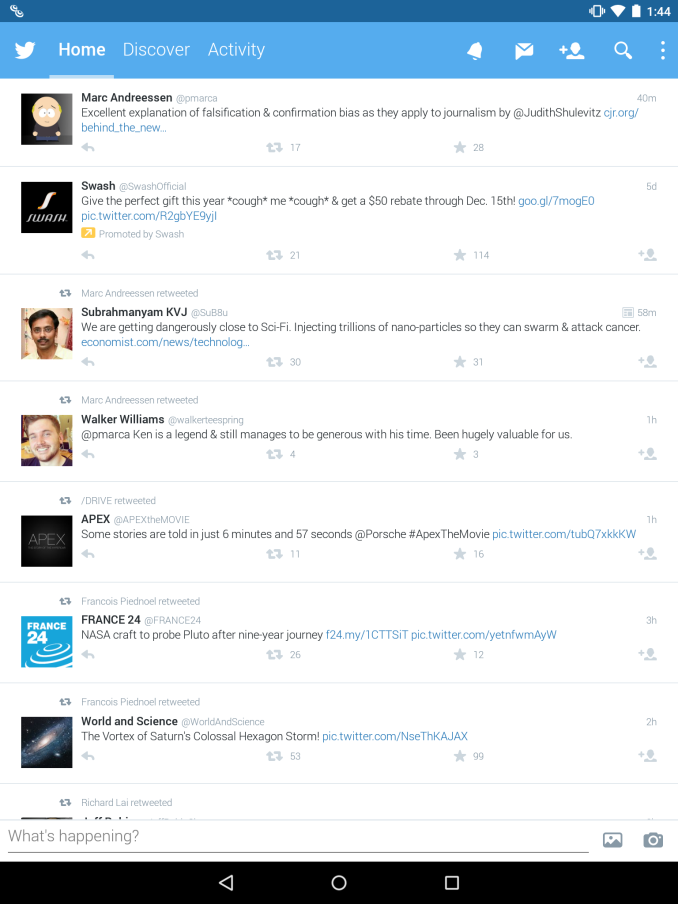
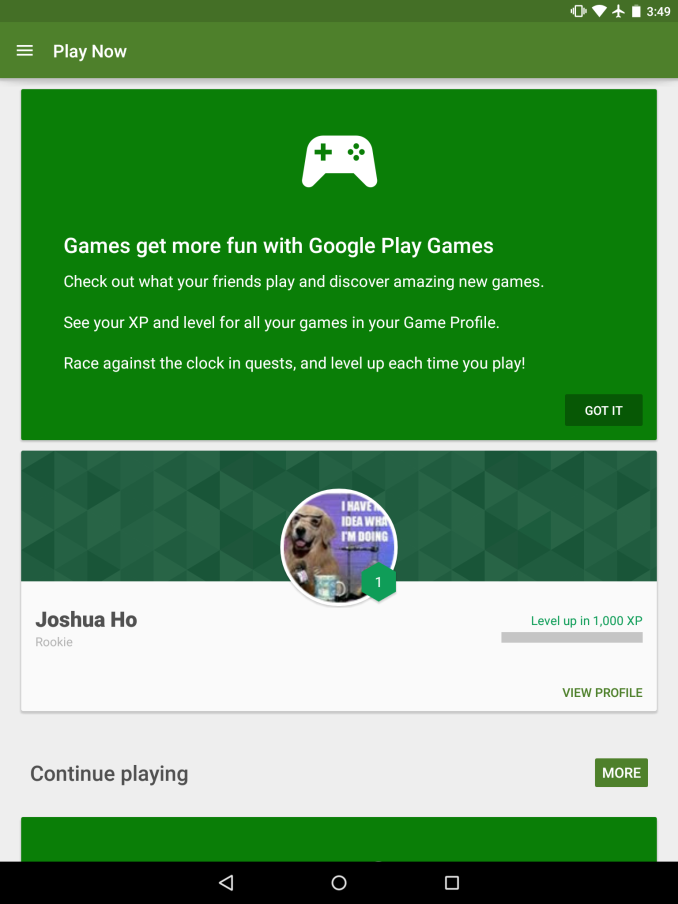
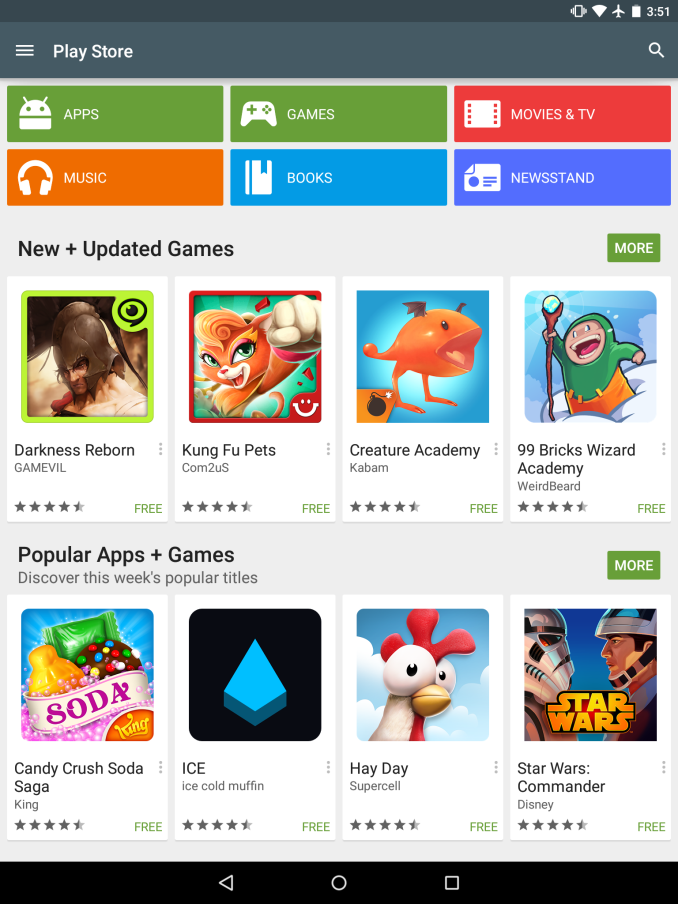
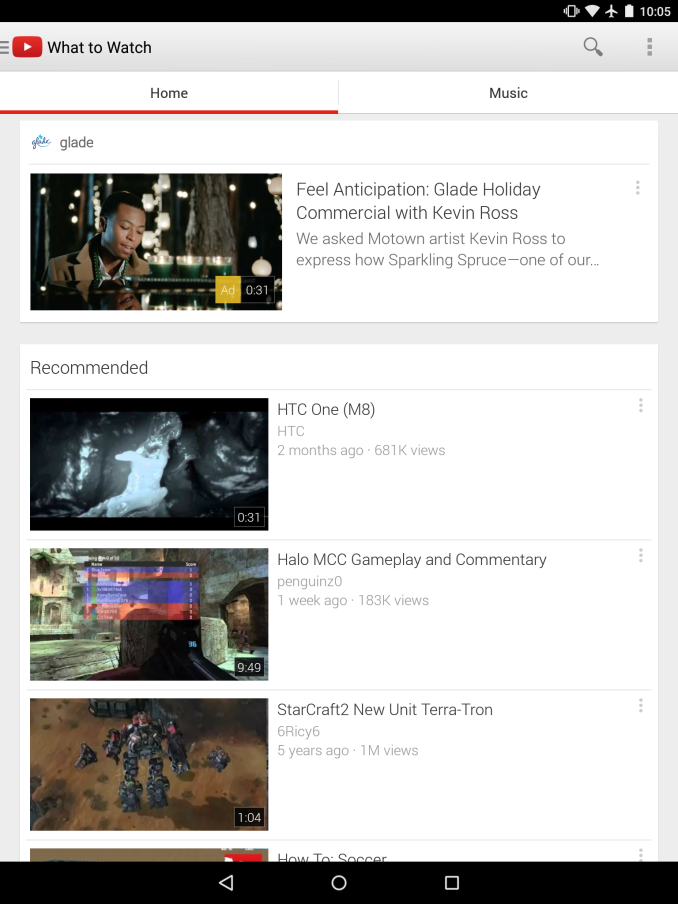
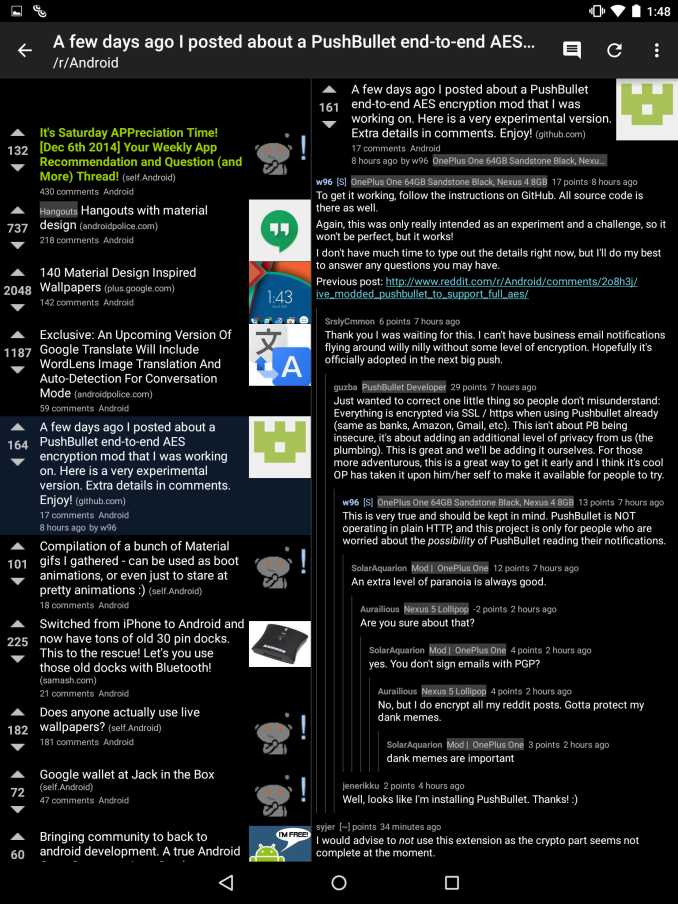








169 Comments
View All Comments
seanleeforever - Wednesday, February 4, 2015 - link
2nd that.I am not here to read about how fast the tablet is or how nice it looks. i am here for in depth content about the chip. would it be nice that this content was available since the release of the product? absolutely, but given the resource it would either be a brief review that is going to be the same as review you can find from hundred of other websites, or late but in depth.
honestly i think anand should be targeting at more tech oriented contents that's few but in depth, and leave the quick/dirty review for other websites.
superb job.
WaitingForNehalem - Wednesday, February 4, 2015 - link
Yeah but who cares about tablets??!! I don't come to Anandtech to read about budget tablets, or SFF PCs, or more smartphones. The Denver coverage was not even that in depth TBH, just commentary on the NVidia slides. I have a EE degree and some of the previous write ups were so in depth they could be class material. This one isn't which is fine but I don't think it excuses how late it came out. The enthusiast market is growing and you should be targeting that demographic as you previously have, not catering to the mainstream like hundreds of sites already do.retrospooty - Wednesday, February 4, 2015 - link
The enthusiast market is growing ? What with CPU's not really getting, or needing to be any faster for several years now, and a standard mid range quad core i5 (non-overclocked) being WAY more than powerful enough to run 99.9% of anything out there, how is the enthusiast market is growing? Most enthusiasts I know don't even bother any more... There just isnt a need. Any basic PC is great these days.WaitingForNehalem - Wednesday, February 4, 2015 - link
I totally agree with you. That doesn't change the fact that the market is growing as more users are adopting gaming PCs. Enthusiasts now actually command a sizable portion of desktops sold. Intel's Devil's Canyon was in response to that.retrospooty - Thursday, February 5, 2015 - link
OK, I get what you mean.I guess I am still in a mind set where a PC "enthusiast" is your overclocker, tweaker, buying the latest and fastest of everything to eek out that extra few frames per second.
Today, a mid range quad core i5 from 3 years ago and a decent mid-high range card runs any game quite nicely.
FunBunny2 - Thursday, February 5, 2015 - link
There was a time, readers may be too young to have been there, when there was a Wintel monopoly: M$ needed faster chips to run ever more bloated Windoze and Intel needed a cycle-sink to soak up the increase in cycles that evolving chips provided. Now, we're near (or at?) the limits of single-threaded performance, and still haven't found a way to use multi-processor/core chips in individual applications. There just aren't a) many embarrassingly parallel problems and b) algorithms to turn single-threaded problems into parallel code. I mean, the big deal these days is 4K displays? It looks prettier, to some eyes, but doesn't change the functionality of an application (medical and such excepted, possibly).Does anyone really need an i7 to surf the innterTubes for neater porn?
nico_mach - Friday, February 6, 2015 - link
I think the chip coverage was superb, I don't have an EE degree and I'm pretty sure that's what the website is steered towards. And I still think I got it.It's fascinating the number of layers involved in this Android tablet, and speaks to why Apple can optimize so much better. There's the chip->NVIDIA chip optimizer->executable code->Dalvik compiler/runtime->dalvik code. I mean, when the lags are encountered, that's twice as many suspects to investigate.
I still think that the review is a little harsh on Denver. It's hitting the right performance envelope at the right price. While it's an mildly inefficient design, clearly NVIDIA is pricing it accordingly, and that might be a function of moving some of the optimization work to software. And that's work that Apple and MS do all the time - Apple much more successfully, obviously. There's a real gap in knowledge of how efficient Apple's chips are vs how optimized the software/hardware pairing is.
dakishimesan - Wednesday, February 4, 2015 - link
I have no interest in tablets, but the deep dive on Denver was a fascinating read, and still completely relevant even if the product is a few months old. Thanks for the great review.Sindarin - Wednesday, February 4, 2015 - link
...can I offer you a cup of hot chicken soup laddy? .....maybe some vicks vapor rub? lol! c'mon dude! we're all sick(vaca) in December!hahmed330 - Wednesday, February 4, 2015 - link
Hi, outstanding article with incredible attention to detail... Do you think its possible to run Dynamic Code Optimizer on per say 2 or maybe even 4 small cpu cores dedicated to doing all the software OoOE functions instead of using time slicing? (A53s or just some XYZ narrow cores for a potential 2+2 or 4+4 or maybe even 8+8)Also whats the die size of a denver core in comparison to a enhanced cyclone core?? That is where a lot of gains are possible potentially 30%-50%..